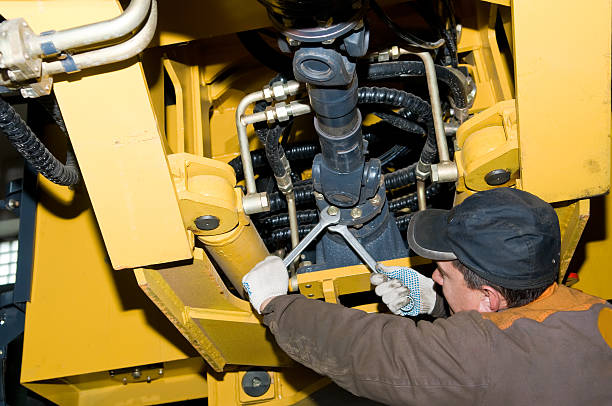TOP TIPS FOR CREATING YOUR EQUIPMENT MAINTENANCE PLAN
Equipment Maintenance
CREATE A SCHEDULE (AND STICK TO IT)
Whether the schedule is for once every day or once every year, having a plan for what checks need to be done and when will provide the most effective maintenance plan. Every checklist should have a specific time when it needs to be done. For example, a pre-start checklist should always be done before starting the machine. If you or your workforce are inconsistent, then you will not be able to predict malfunctions.

KNOW YOUR MACHINE
Because preventive maintenance relies on spotting issues before they arise, it’s important to be familiar with the machine you are servicing. Consult the excavator’s manual, and make sure everyone who works with the machine is properly trained with this information.
PAY CLOSE ATTENTION
Excavators are made of innumerable small parts, each of which interact with one another in different ways. Many of these parts have a limited lifespan and will need to be replaced, such as teeth on buckets or filters for fluids. In order to keep your excavator in working condition, you need to be able to find and fix problems before they cause a breakdown. Part of prevention is knowing your machine, but you (and everyone else who works on the machine) will need to keep a close eye on its condition as well.
DOCUMENT EVERYTHING
Proper documentation makes monitoring your excavator’s health much easier. Although the objective of a preventive maintenance plan is to stop breakdowns, they most likely will happen eventually. Recorded information about the excavator’s health can help you figure out the issue faster. Even something as simple as filling out a checklist and filing it away can help you pinpoint when the machine broke down and what could have caused it.
It might sound difficult to keep track of everything to keep your machine in working condition, but EquipmentShare has a solution to streamline the process and save you the headache. With T3 Analytics, you can pull reports about the machine’s health, location, service history and more.
DAILY EXCAVATOR MAINTENANCE CHECKLIST
Note: This is an example inspection checklist. It’s best to create your own maintenance plan, based on your needs.
PRE-START CHECKLIST
- Check that the machine is parked correctly and safe to start.
- Check for damaged or worn out parts, especially parts that often need to be replaced, like belts, hydraulic lines and hoses.
- Check the undercarriage for any leaks or loose parts. If the machine is wheeled, check the tires to make sure they are undamaged and
- properly inflated.
- Check the cab of the excavator for damaged or broken windows, mirrors, and seat belts.
- Check all fluid levels, including the fluids for your engine, power steering, and hydraulics.
START CHECKLIST
- Start the engine of your machine and allow the engine to idle for 5 to 10 minutes.
- Listen for any unusual noises.
- Feel for any odd vibrations or other problems with the suspension system.
- Check the gauges on the dashboard for anything that needs to be fixed or replaced.
- Test the excavator’s hydraulic system by moving the arm and boom. Pay attention to odd noises or movements.
- Test all of the lights on the vehicle, including headlights, backup lights and brake lights.
- Test that the brakes work properly.